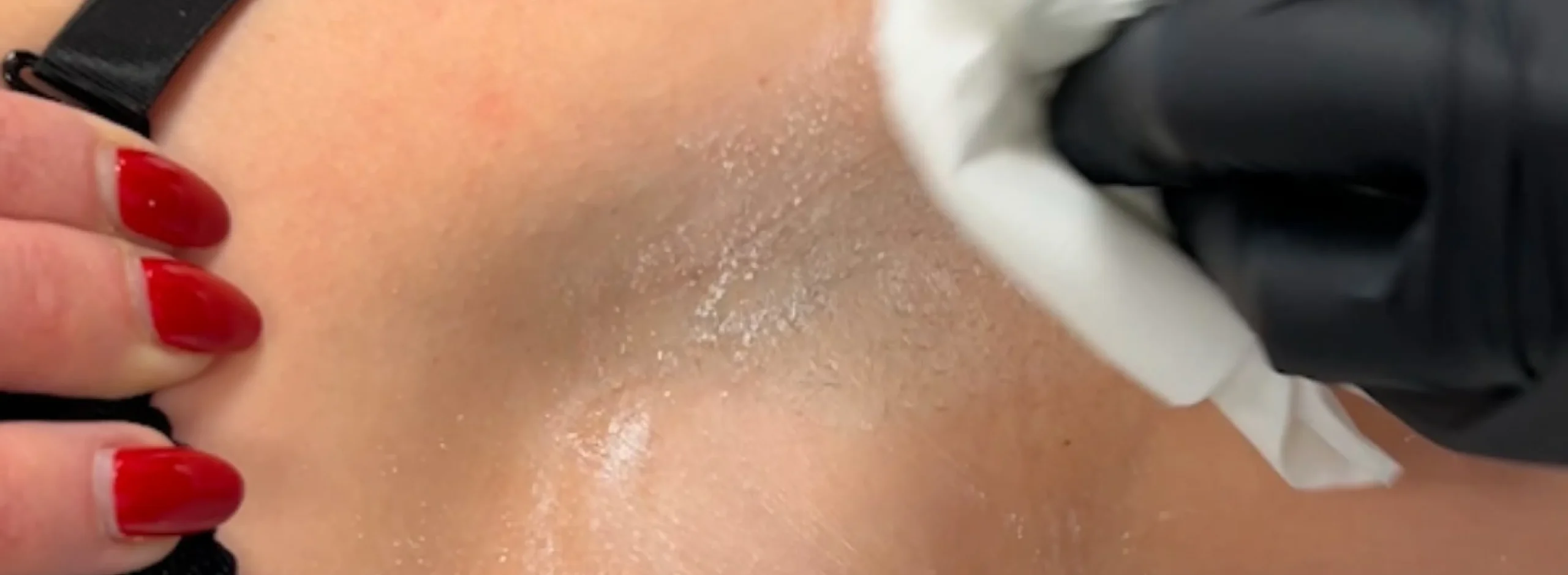FREE SHIPPING on orders over $400!
FREE SHIPPING on orders over $400!
FREE SHIPPING on orders over $400!
FREE SHIPPING on orders over $400!

Sweat is a natural bodily response, but during waxing, it can be problematic. Clients often wonder, “Can you sweat after waxing?” — and the answer is yes. Sweating is common both during and after the procedure due to stress, pain, or external factors like humidity and temperature. Understanding how to handle sweating during waxing is essential for maintaining client comfort, hygiene, and effective hair removal.
Sweating can be triggered by several factors, such as nervousness, pain anticipation, and elevated room temperature. The body’s natural response to discomfort is to activate sweat glands, especially in sensitive areas like the armpits or bikini line. Additionally, sweating after waxing may occur as the body attempts to cool down or respond to minor inflammation in the treated skin area.
In high-humidity environments, even the calmest client may experience increased moisture. This can interfere with the wax’s grip on the hair and make the removal process more challenging. Moreover, the moisture on the skin can reduce adhesion, especially when using soft wax with strips.
Yes, sweating after waxing is perfectly normal. Many clients feel concerned when they notice excess moisture on freshly waxed skin, but it’s a common reaction. The body is simply reacting to the removal of hair and the temporary stress inflicted on the skin and follicle.
However, prolonged sweating can become problematic. It may contribute to irritation, clogged pores, or even bacterial growth if proper aftercare and hygiene aren’t followed. Ensuring that clients follow professional guidelines for post-wax care is crucial in managing sweat-related effects.
Freshly waxed skin is highly sensitive. Sweat can aggravate the skin, introduce bacteria, and lead to breakouts or inflammation. The salt and acids in sweat may irritate open pores and cause redness or itching, especially in sensitive areas like the armpits or bikini zone.
When sweat mixes with wax residue left on the skin, it can cause discomfort or slippage in clothing. This not only compromises hygiene but can also delay healing. That’s why sanitation and cleansing post-procedure are essential parts of professional waxing services.
To ensure a comfortable waxing session for both client and esthetician, it’s important to follow these professional tips to control moisture and sweat:
By minimizing sweat on the skin’s surface, estheticians can ensure the wax grips the hair more effectively, making the procedure smoother and more efficient.
Right after the waxing procedure you can use special anti-stress powder to treat particularly reactive skin. It helps control post-hair removal redness, provides a soothing effect, and minimizes pores, preventing bacteria from getting inside the follicles.
Clients should follow proper aftercare to prevent excess moisture from causing issues post-wax. Encourage them to:
Remind clients that some sweating after waxing is completely natural, but proper care reduces complications and supports healing.

For clients who are particularly sweat-prone or anxious before waxing sessions, estheticians can take a few more steps. Offer calming tea or water before the procedure. Schedule appointments during cooler parts of the day. Use wax formulas designed for high-moisture situations (like quick-setting hard waxes). Prep the skin with a lightweight barrier cream, if appropriate, followed by powder.
Client nerves play a big role in sweating during waxing. Anxiety elevates heart rate and activates sweat glands, especially in intimate zones. Estheticians who recognize and ease nerves — e.g., through calming conversation or slower technique — reduce moisture output and improve the client experience.
Also, absorption of aftercare serums and powders matters. On damp skin, products may not absorb properly, leaving a slick film that interferes with healing. Ensuring the skin is momentarily dried before applying lotions enhances absorption and avoids mixing with sweat.
This proactive approach makes a significant difference in both client comfort and waxing results.
Sweating after waxing, while normal, can pose challenges for estheticians if not properly addressed. Using talcum or anti-sweat powder, ensuring proper prep, and advising on correct aftercare will help prevent complications. Understanding the effects of moisture and sweat on wax adhesion is vital for maintaining hygiene and achieving smooth results.
So, can you sweat after waxing? Absolutely. But with the right techniques, tools, and client education, you can manage it effectively and maintain professional standards in every waxing session.


